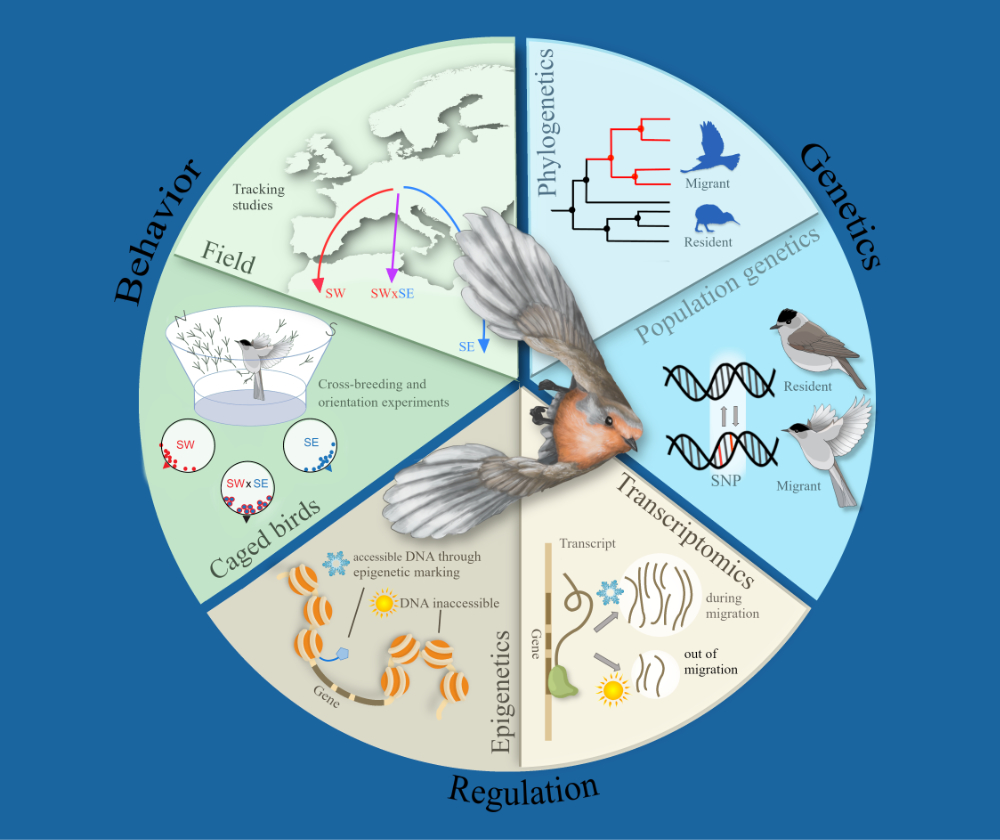Speaker
Description
The Asian houbara bustard (Chlamydotis macqueenii), a partial migrant species of conservation concern, offers a compelling model for unravelling the evolutionary dynamics of avian migration. Intensive radiotracking records revealed both resident and migrant populations (including obligatory and partially migrant individuals), each following distinct migratory pathways. To investigate the genetics of migratory behaviour in Asian houbara, we employed a combination of radiotracking and genomic techniques. The objectives include evaluating the genetic influences on migratory patterns through a cross-release experiment using a common garden protocol, establishing a robust genomic resource, and conducting a preliminary genomic exploration employing a candidate gene approach. Birds originated from two migratory pathways (Western and Eastern Kazakhstan) were produced in captivity following a strict pedigree management, hand reared then released. Two release areas were selected to match both migratory pathways; with individuals from both origins released in each site. Movement from 100 birds equipped with transmitters revealed a remarkably strong genetic component to migration, for both departure timing and migration pathways. To explore further the genetics of migration, we generated a de novo reference and annotated genome using long- and short-read sequencing, coupled with RNA-sequencing data. Resequencing data from resident and migrant individuals across the distribution range, combined with analysis of 13 candidate genes, revealed a significant association between migratory behaviour and variance at DIO2, a gene involved in energy metabolism and neural plasticity functions. Other tested genes showed significant associations with sampling locations rather than migratory behaviour, emphasizing a pronounced geographic effect on their genetic variation. Further incorporation of innovative genomic approaches, such as long-read sequencing for uncovering structural variants, not only holds promise for identifying genome regions influencing Asian houbara migration but also in providing crucial insights for an effective management of ongoing conservation measures for the species.

